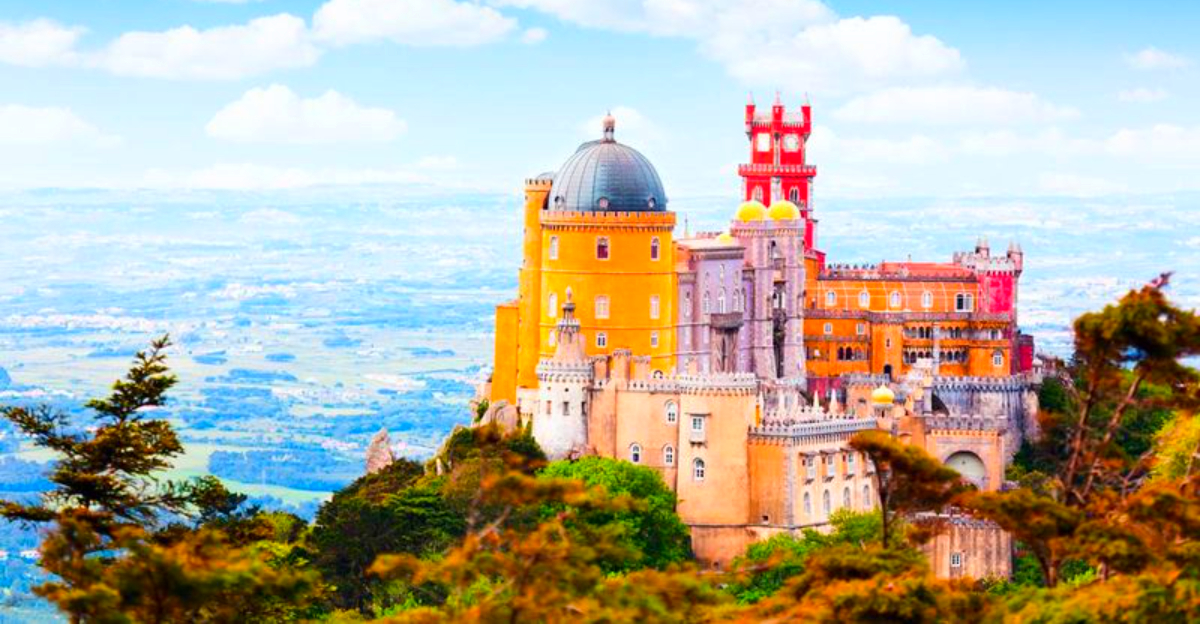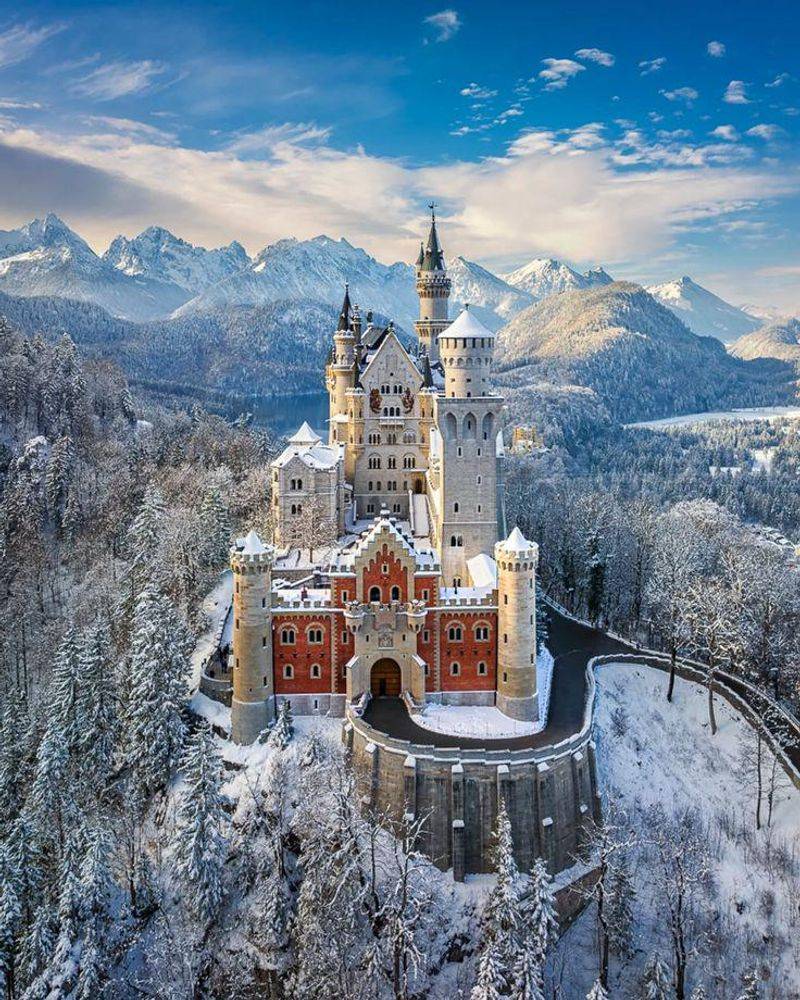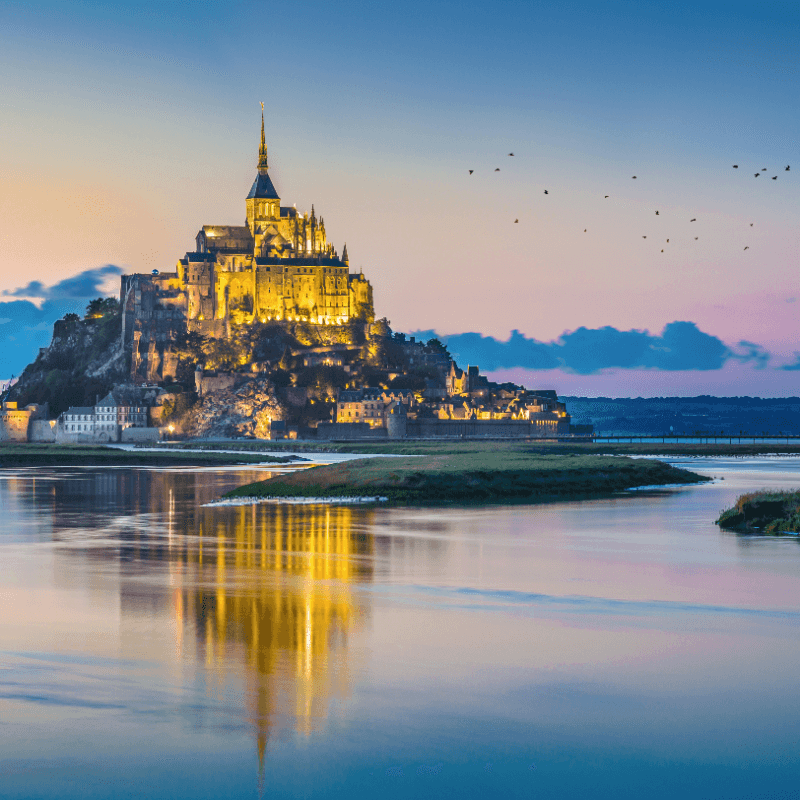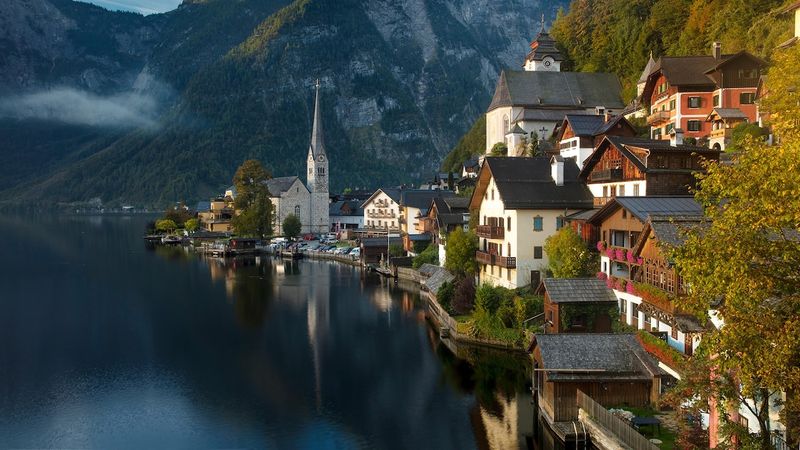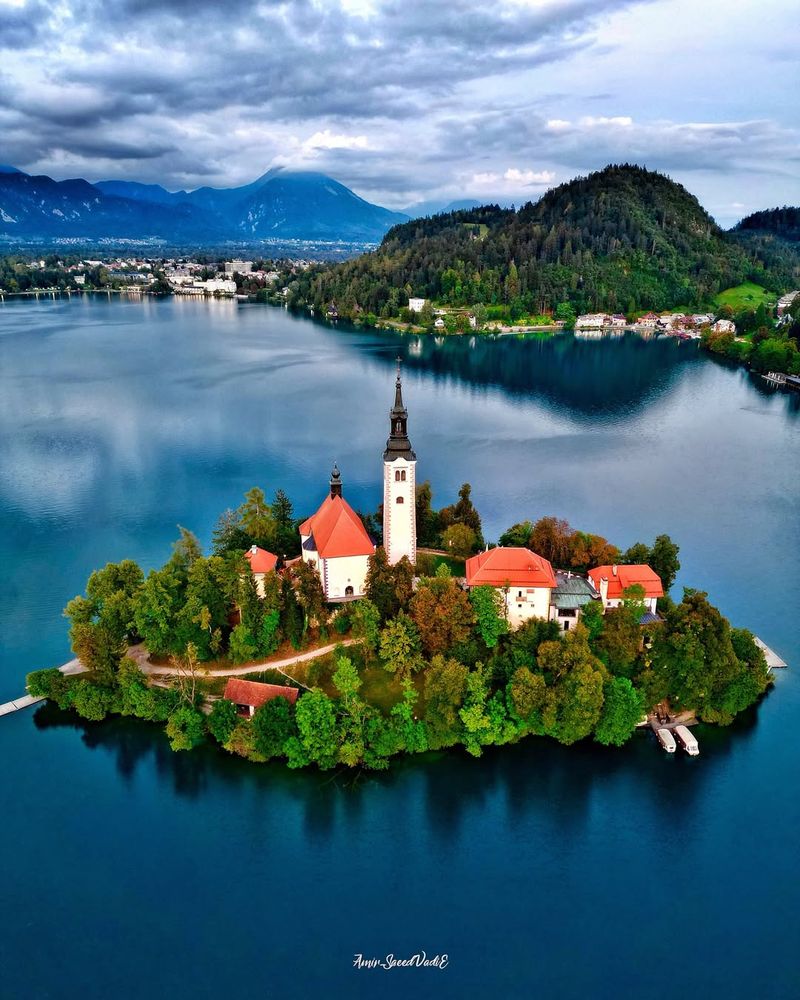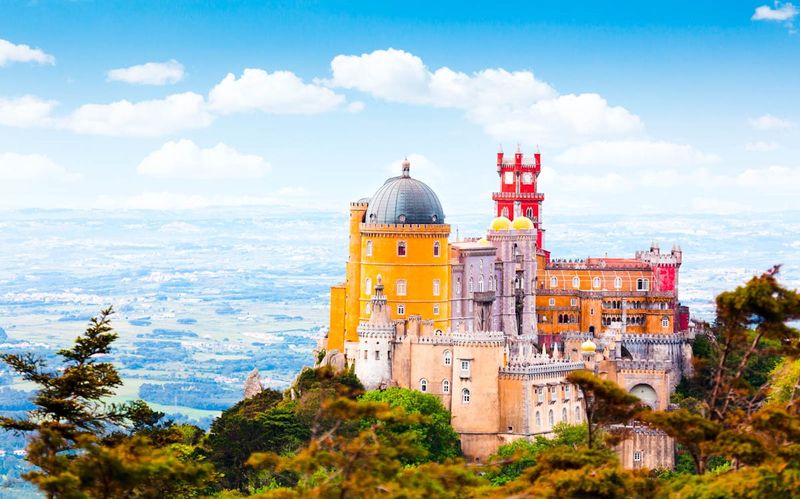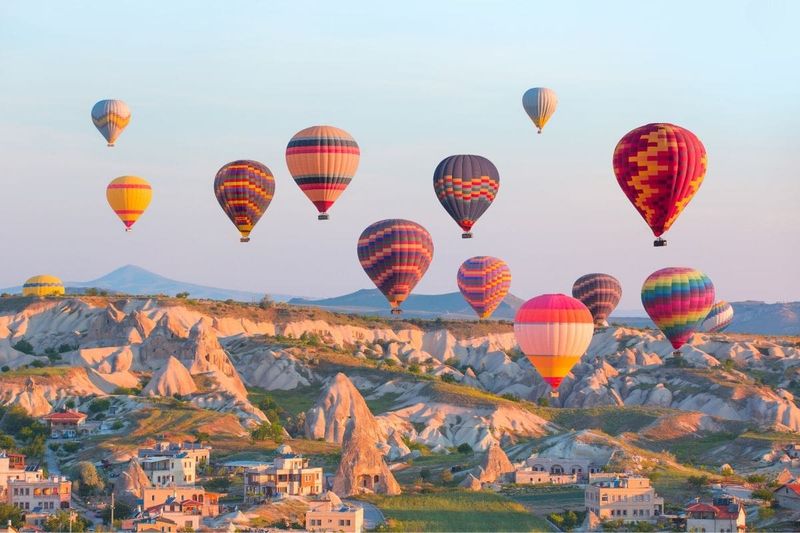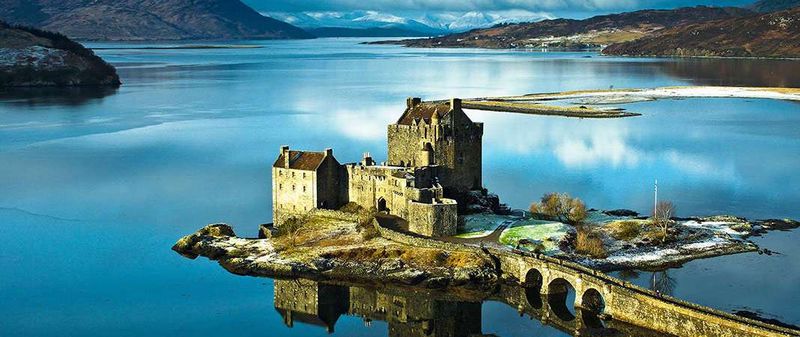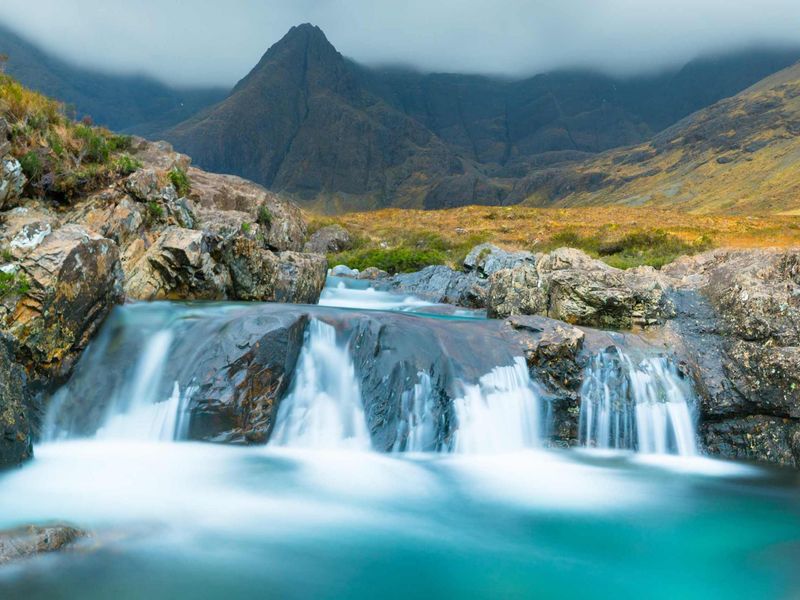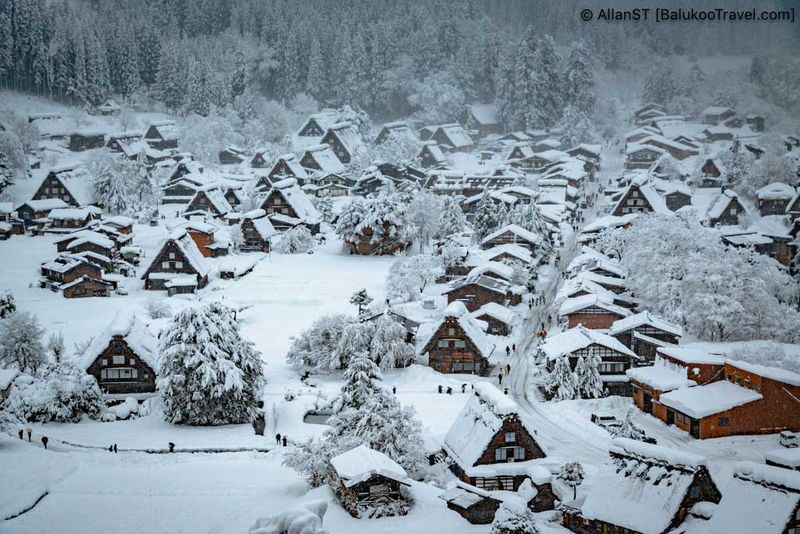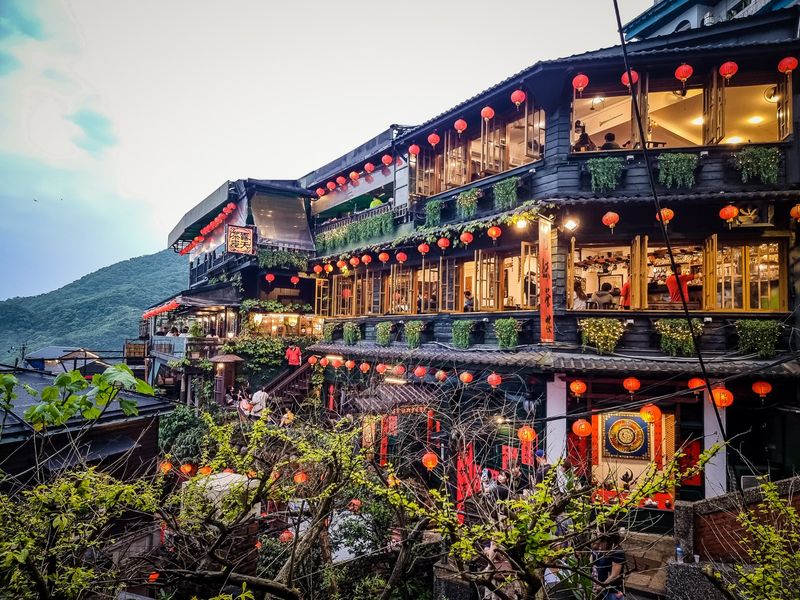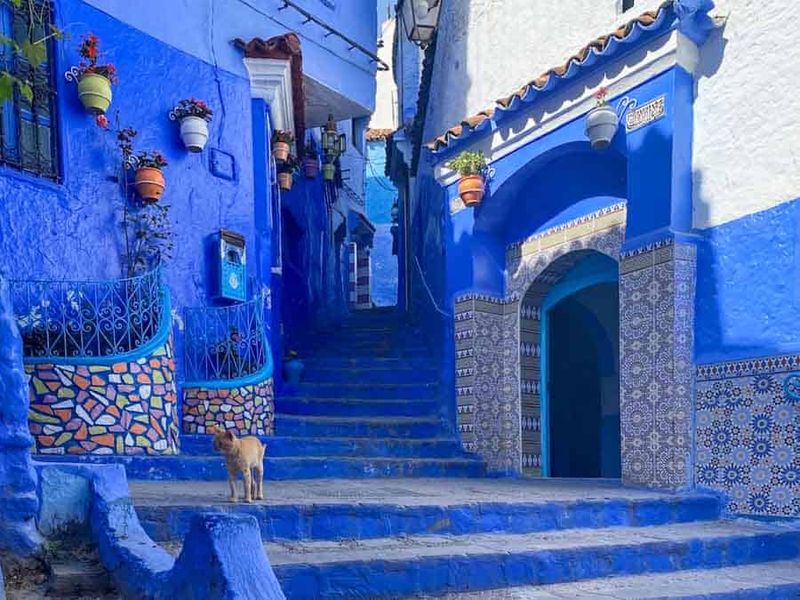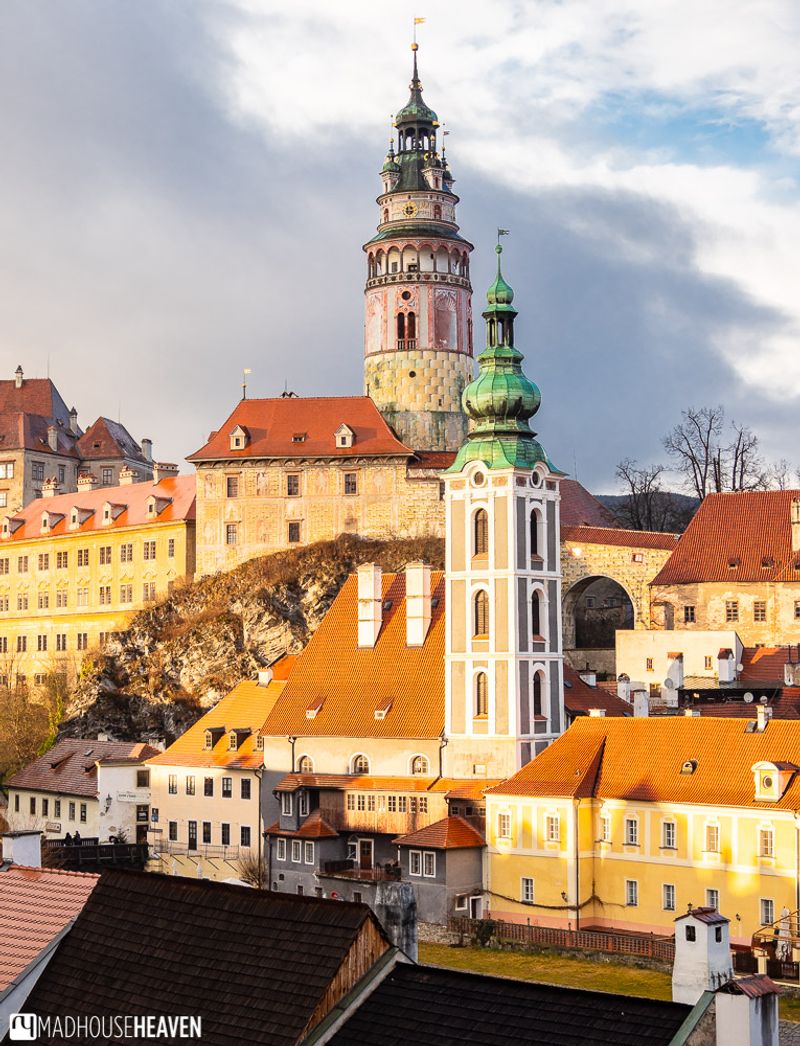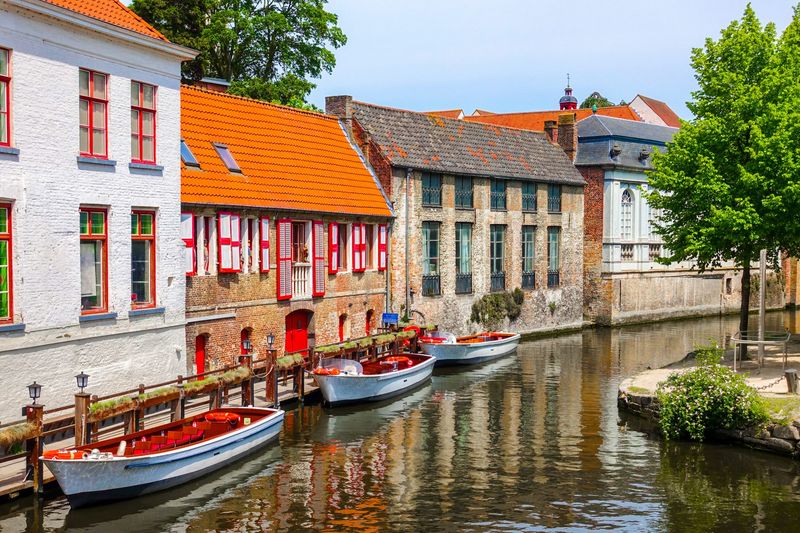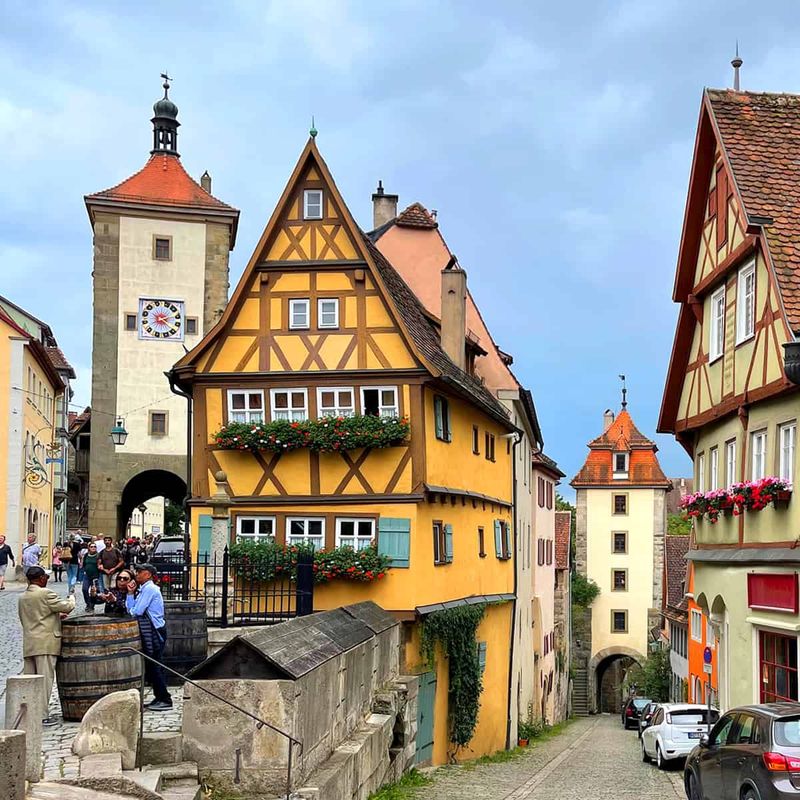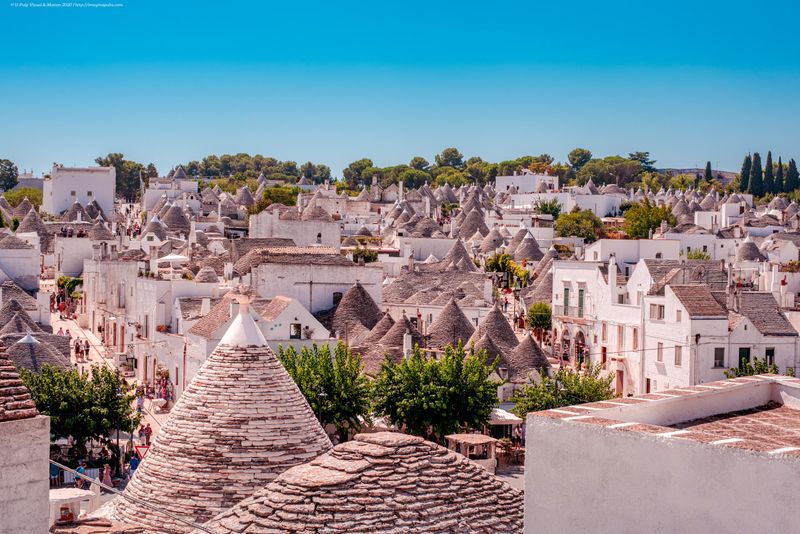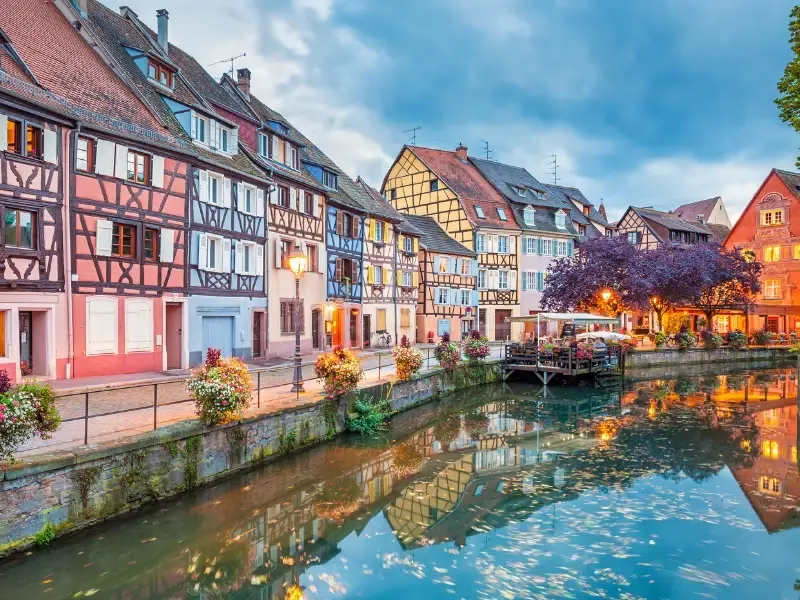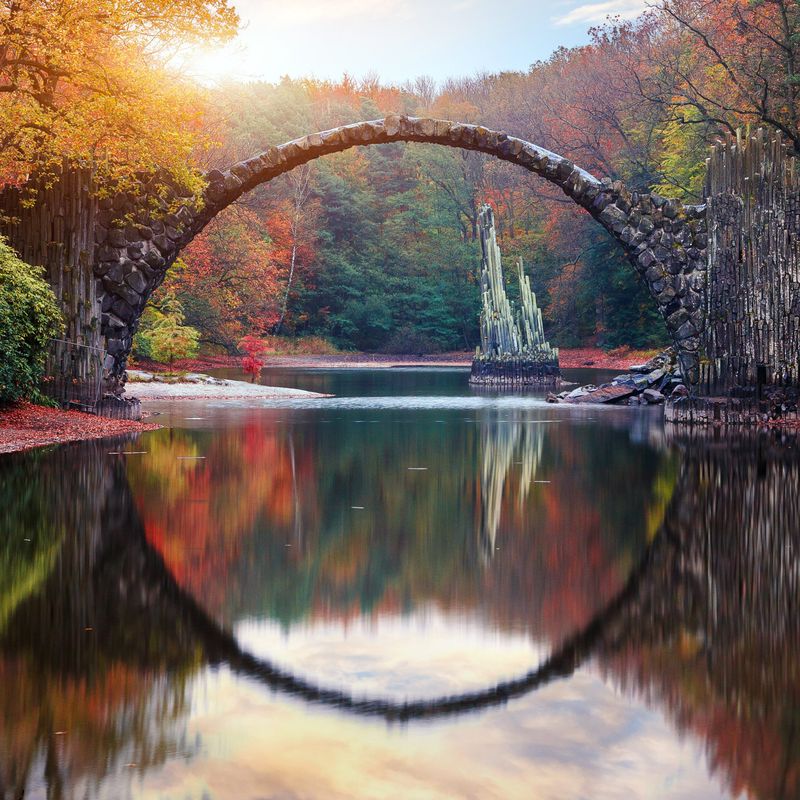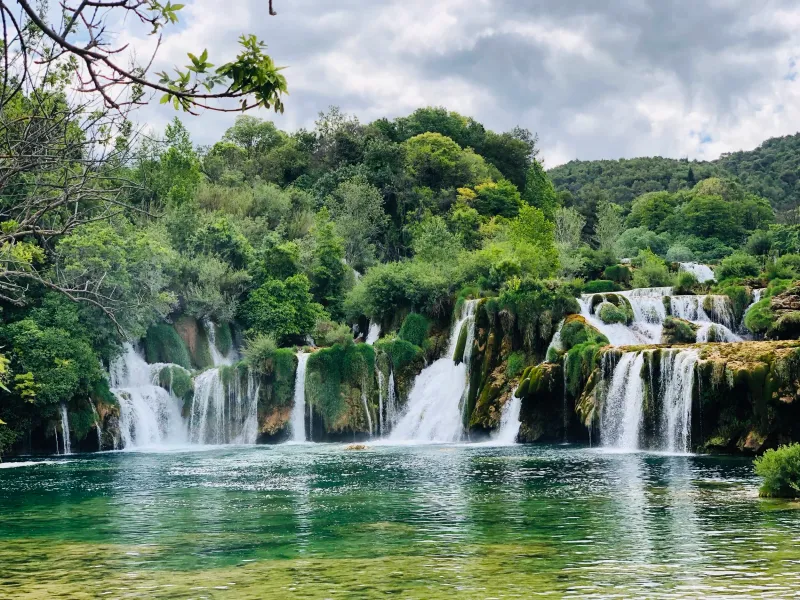These aren’t scenes from a fantasy novel, they’re real places you can visit today. From candy-colored palaces in Portugal to floating abbeys in France, our world is filled with destinations that look like they were designed by a fairytale illustrator. Pack your sense of wonder and get ready to explore eighteen magical spots that prove reality can be just as enchanting as fiction.
1. Neuschwanstein Castle, Germany (Bavaria)
Perched high above the Bavarian village of Hohenschwangau, this 19th-century dream castle looks like it was lifted straight from a Disney movie—and in fact, it inspired one. King Ludwig II built this limestone fantasy as a personal retreat, filling it with Romanesque towers, throne rooms, and even a grotto. Today, visitors from around the globe climb the winding path to see what royal imagination can create.
Tickets sell out fast, so booking through the official Bavarian palaces authority weeks in advance is smart. Guided tours move quickly through lavish interiors, including the Singers’ Hall and Ludwig’s bedroom. The views from Marienbrücke bridge are unforgettable, especially when morning mist clings to the valley below.
2. Mont-Saint-Michel, France (Normandy)
Rising from tidal flats like a mirage, this medieval abbey town seems to defy gravity. Narrow cobblestone streets spiral upward past half-timbered houses, souvenir shops, and ancient ramparts, all crowned by a Gothic abbey that has watched over pilgrims for a thousand years. When the tide rushes in, the mount becomes an island; when it retreats, you can walk the sands that surround it.
Normandy Tourism and the abbey itself keep visitor information current, including mass times and special evening illuminations. Crowds peak midday, so early-morning or late-afternoon visits offer quieter exploration. Wear comfortable shoes—the climb is steep, but every step rewards you with views that belong in a legend.
3. Hallstatt, Austria
Cradled between a mirror-smooth lake and towering Alps, Hallstatt’s pastel houses seem to float on water. This UNESCO-listed village has been mining salt since prehistoric times, and its charm has only deepened with age. Window boxes overflow with geraniums, swans glide past wooden boat docks, and church bells echo off the cliffs.
The tourist office in the village center offers maps, hiking routes, and tips for avoiding the busiest hours. Early risers catch the best reflections in the lake, and a cable-car ride up the Salzberg rewards you with panoramic views. Yes, it’s popular—but one look at the sunrise over those peaks explains why travelers have been enchanted for centuries.
4. Lake Bled, Slovenia
A tiny island crowned by a bell tower sits in the middle of an emerald lake, while a medieval castle clings to a cliff above—Lake Bled looks like an artist’s daydream. Legend says ringing the church bell grants wishes, and rowing out in a traditional pletna boat feels like stepping into folklore. The Julian Alps frame every view, and swans patrol the shore like feathered guards.
Bled’s official website lists current events, hiking trails, and cream-cake cafés (the local kremšnita is a must). Summer brings warm swimming, while winter frosts the scene in white. Whether you hike the castle ramparts or simply stroll the lakeside path, every angle offers postcard magic.
5. Pena Palace, Sintra, Portugal
Painted in sunshine yellow and cherry red, this Romanticist palace crowns the misty Sintra hills like a jewel box. King Ferdinand II transformed a ruined monastery into this whimsical masterpiece in the 1840s, blending Moorish arches, Gothic turrets, and Renaissance domes. Wander through rooms filled with tiled walls, stained glass, and furniture fit for royalty, then step onto terraces where you can see all the way to the Atlantic.
Entry requires timed tickets sold through Parques de Sintra—book online to skip long queues. The surrounding park is a forest wonderland of ferns, exotic trees, and hidden grottoes. Mornings often bring fog that swirls around the towers, making the palace look even more like a dream.
6. Cappadocia’s Fairy Chimneys, Türkiye
Wind and water spent millions of years sculpting Cappadocia’s volcanic tuff into cone-shaped towers the locals call fairy chimneys. Early Christians carved chapels, monasteries, and entire underground cities into the soft rock, leaving behind frescoed walls and secret tunnels. At dawn, hundreds of hot-air balloons lift off, drifting over the honeycombed valleys in one of the world’s most surreal sights.
This UNESCO-listed landscape stretches across central Türkiye, with Göreme as the main hub. Guided hikes through Rose Valley and Ihlara Gorge reveal hidden cave churches and panoramic viewpoints. Whether you float above in a balloon basket or explore on foot, Cappadocia feels like stepping onto another planet—one where magic is carved in stone.
7. Eilean Donan Castle, Scotland
Where three sea lochs converge, a 13th-century fortress rises from a rocky island, connected to the mainland by a graceful stone bridge. Eilean Donan has survived Viking raids, Jacobite uprisings, and centuries of Highland weather, earning its place as one of Scotland’s most iconic castles. Inside, you’ll find clan banners, antique weapons, and rooms that whisper tales of loyalty and rebellion.
The castle’s official site lists opening times, which vary by season. Low tide reveals the rocky shore where otters sometimes play, and sunset paints the stone walls in shades of gold and rose. Whether you recognize it from a dozen films or you’re seeing it for the first time, Eilean Donan feels timeless—a sentinel guarding Scotland’s wild beauty.
8. The Fairy Pools, Isle of Skye, Scotland
Crystal-clear waterfalls tumble down the slopes of the Black Cuillin, filling a series of shallow pools that glow an impossible shade of turquoise. The Fairy Pools earned their name honestly—one look at the light dancing on that blue water and you’ll believe in enchantment. Brave souls wade in year-round, though the snowmelt-fed streams are bracingly cold even in summer.
Access details, parking, and trail conditions are posted on the official Isle of Skye guide; roadworks can affect the route, so check before you set out. The walk from the car park is short and fairly easy, with boardwalks over boggy sections. Dress in layers and waterproofs—Skye’s weather changes in minutes, but rain only makes the pools more dramatic.
9. Shirakawa-go, Japan (Gifu Prefecture)
Steep-roofed farmhouses with thatched gasshō-zukuri construction nestle in a mountain valley that time seems to have forgotten. Built to shed heavy snow, these A-frame homes have sheltered families for centuries, and many still do. When winter blankets the village in white, lights glow from the windows, smoke curls from chimneys, and Shirakawa-go transforms into a living snow globe.
The village’s official site offers guidance on parking, viewpoints, and local etiquette—remember, people live and work here. A hilltop observation deck provides the classic postcard view, especially magical during evening illuminations in January and February. Spring brings cherry blossoms, summer green rice paddies, and autumn fiery maples, proving every season here belongs in a fairytale.
10. Jiufen, Taiwan (New Taipei City)
Red lanterns sway above narrow stone stairways that twist through an old gold-mining town clinging to a hillside. Jiufen’s tea houses spill warm light onto rain-slicked steps, and the scent of sweet-potato balls and peanut ice cream drifts from street vendors. On misty evenings, the view over the valley and distant sea becomes a watercolor painting, soft and dreamlike.
New Taipei City’s tourism site keeps visitor-center details and transit information up to date. The Old Street can get crowded on weekends, so weekday afternoons offer a quieter experience. Duck into a teahouse to sip oolong while gazing at the mountains, or browse shops selling handmade crafts and local snacks. Jiufen’s charm lies in its layers—history, flavor, and atmosphere woven together like silk.
11. Chefchaouen, Morocco
Every wall, doorway, and alley in this Rif Mountain town glows in shades of indigo and sky blue. Founded in the 15th century, Chefchaouen’s blue tradition may have begun with Jewish refugees or simply as a way to keep homes cool and mosquitoes away—either way, the effect is pure magic. Wander the medina’s maze of lanes, where cats nap on blue steps and vendors sell handwoven blankets in jewel tones.
Morocco’s national tourism page offers regional information and travel tips. The town is small enough to explore on foot, with the Spanish Mosque hike rewarding you with panoramic views at sunset. Sip mint tea in a rooftop café, haggle gently in the souks, and let the blue walls work their calming spell—Chefchaouen is a place to slow down and savor.
12. Český Krumlov, Czech Republic
A meandering river loops around a UNESCO-listed town where cobblestones, Gothic arches, and a painted castle tower create a scene straight from a medieval manuscript. Český Krumlov has barely changed since the Renaissance, and wandering its lanes feels like time travel. Baroque frescoes cover building facades, street musicians play in hidden courtyards, and the castle complex—second only to Prague’s—crowns the hill with gardens, a bear moat, and a rotating baroque theater.
The official regional site and tourist information center provide current visitor details and event calendars. Summer brings open-air theater and river-rafting fun, while winter softens the town in snow. Climb the castle tower for rooftop views that explain why artists and dreamers have been drawn here for centuries.
13. Bruges, Belgium
Canals wind through a medieval city where stepped-gable houses lean toward the water and swans glide under stone bridges. Bruges earned the nickname “Venice of the North,” but its character is entirely its own—quieter, cozier, and wrapped in the scent of fresh waffles and dark chocolate. Climb the Belfry’s 366 steps for a bird’s-eye view of red rooftops and church spires, or simply wander the lanes and let the city reveal itself at a slow, satisfying pace.
Visit Bruges, the official tourism site, is your best planning resource for museums, boat tours, and seasonal markets. Weekday mornings offer the most peaceful canal views. Sample pralines from local chocolatiers, sip Belgian beer in a centuries-old tavern, and understand why Bruges has enchanted travelers since the Middle Ages.
14. Rothenburg ob der Tauber, Germany
Walk through the gates of Rothenburg and you step into perhaps Europe’s most perfectly preserved walled town. Half-timbered houses in candy colors line cobblestone streets, and the medieval ramparts still encircle the entire old town. Every corner looks like a stage set—the Plönlein fork, the Market Square, the towers that once guarded against invaders—but this isn’t a theme park. It’s a living town where bakers still make schneeballen pastries and watchmen still walk the walls at night.
The city’s official tourism desk keeps event calendars and opening hours current, including the famous Christmas market. Walk the wall-top path for rooftop views, or visit the Medieval Crime Museum for a quirky history lesson. Rothenburg’s magic lies in its authenticity—centuries of stories preserved in stone and timber.
15. Alberobello, Italy (Puglia)
An entire town of cone-roofed trulli houses spreads across Puglia’s rolling hills like a Hobbit village brought to life. These whitewashed limestone dwellings, built without mortar using a prehistoric technique, have sheltered families since the 14th century. Walk through the Rione Monti or Aia Piccola neighborhoods and you’ll find over 1,500 trulli, many still homes, some now shops selling local olive oil, wine, and handmade crafts.
Regional and local tourism pages cover the neighborhoods and offer practical guidance. Climb to the Belvedere viewpoint for a sea of conical roofs stretching toward the horizon. Many trulli display painted symbols on their roofs—ancient or mystical signs that add to the fairytale atmosphere. Alberobello is UNESCO-listed, utterly unique, and proof that real-world architecture can rival any fantasy.
16. Colmar, France (Alsace)
Half-timbered houses in sherbet shades line quiet canals in the district called “La Petite Venise,” and every window box overflows with geraniums. Colmar’s old town looks like an illustration from a children’s storybook—crooked rooflines, painted shutters, cobblestone lanes barely wide enough for two people to pass. The town has been spared by wars and modernization, leaving its 16th-century charm intact and irresistible.
The Colmar tourism office profiles the district and provides maps for self-guided walks. Stroll the Rue des Marchands, visit the Unterlinden Museum to see the Isenheim Altarpiece, or take a boat ride through the canals. December transforms Colmar into a Christmas-market wonderland, but any season rewards you with Alsatian wine, tarte flambée, and streets that feel lifted from a fairytale page.
17. Rakotzbrücke (Devil’s Bridge), Kromlau, Germany
Built in the 1860s, this stone arc was designed with one goal: to form a perfect circle when reflected in the water below. Rakotzbrücke, or Devil’s Bridge, achieves that impossible geometry so flawlessly that it looks like a portal to another realm. Moss clings to the ancient basalt columns, and the surrounding Azalea and Rhododendron Park frames the scene in seasonal color—fiery autumn leaves or spring blooms.
Crossing the bridge is prohibited to preserve the delicate structure, but viewing platforms let you capture the magic from every angle. Wikipedia and park sources document the history and rules. Visit early in the morning when mist rises from the water and the reflection is sharpest. It’s a small site, easily seen in an hour, but the image will stay with you far longer—proof that human craft can conjure wonder.
18. Plitvice Lakes National Park, Croatia
Sixteen travertine lakes tumble into one another through a series of waterfalls that seem too beautiful to be real. Wooden boardwalks wind over and around the turquoise water, bringing you so close to the cascades you can feel the mist on your face. Fish dart through water so clear it looks like liquid glass, and the surrounding beech and fir forest shelters deer, bears, and countless bird species.
The national park’s official site handles ticketing and provides seasonal information—summer brings crowds, so spring and autumn offer quieter trails and equally stunning colors. The park is vast, with multiple routes ranging from short strolls to full-day hikes. Wear sturdy shoes, bring a camera, and prepare to believe that fairytales can be made of water, stone, and light.
